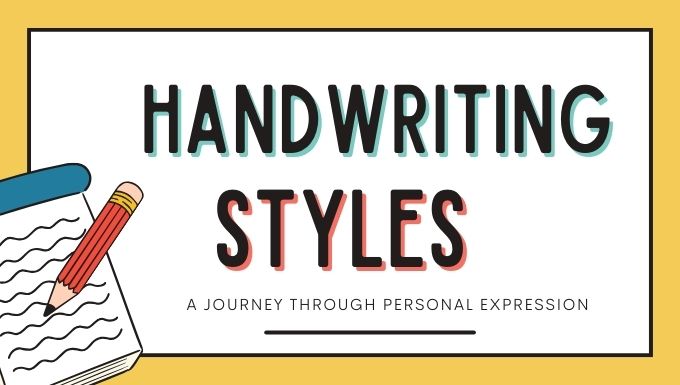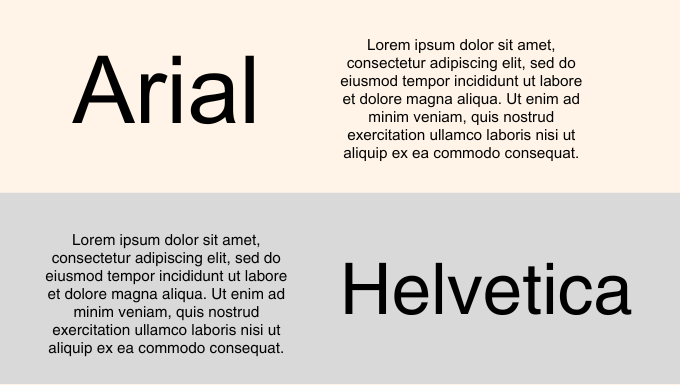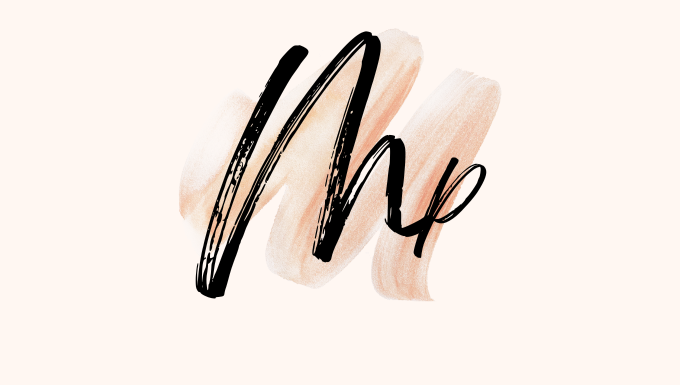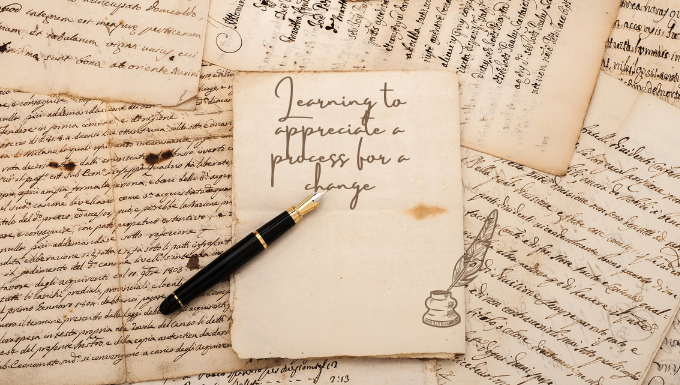
Table of Contents
I. Introduction
The Enduring Significance of Handwriting in the Digital Age
In today’s digital landscape, where keyboards and touchscreens dominate our daily communication, the art of handwriting may seem like a relic of the past. However, handwriting remains a vital aspect of human expression, cognitive development, and personal connection. Research has shown that handwriting improves memory retention, enhances creativity, and fosters better understanding and comprehension of written material. Moreover, handwriting conveys personality, emotion, and individuality in a way that digital communication often cannot. As we continue to navigate the digital age, it is essential to recognize the value of handwriting and its unique benefits, ensuring that this timeless skill remains an integral part of our lives.
Exploring the Diverse World of Handwriting: A Guide to Styles and Characteristics
The purpose of this post is to delve into the fascinating realm of handwriting styles, exploring their distinct characteristics, and showcasing examples of each. From the elegant loops of traditional cursive to the bold strokes of artistic calligraphy, we will examine the various handwriting styles that make written communication a unique and personal expression. By understanding and appreciating these different styles, we can gain insight into the individuals who write them, and perhaps even discover our own unique handwriting identity.
II. Printing Styles
Printing styles are the foundation of handwriting, providing a clear and legible base for written communication. These styles are characterized by distinct letterforms, spacing, and stroke directions, and are often taught in elementary education as the building blocks of handwriting. Printing styles can be divided into two main categories: Block Letters and Cursive Printing, each with its own unique characteristics and uses.
A. Block Letters
Block Letters, also known as manuscript printing, are a fundamental printing style where uppercase and lowercase letters are written with no connecting strokes. Each letter is formed individually, with a focus on clarity and precision. This style is often taught to young children as their first introduction to handwriting, and is commonly used in signage, labels, and other applications where legibility is crucial.
Example: sans-serif fonts like Arial and Helvetica

B. Cursive Printing
Cursive Printing, also known as mixed handwriting, combines elements of both print and cursive writing. This style is characterized by:
Key Features:
- A mix of uppercase and lowercase letters
- Some connecting strokes between letters, but not all
- A more fluid and flowing appearance than Block Letters
Cursive Printing is often used as a transitional style for children learning to write, as it introduces connecting strokes while still maintaining some of the clarity of Block Letters.
Description: a mix of print and cursive letters with some connecting strokes
Example: a combination of uppercase and lowercase letters with some flowing connections
III. Cursive Styles
Cursive styles are characterized by flowing connections between letters, creating a fluid and elegant appearance. These styles emphasize the continuity of strokes, making them a popular choice for personal correspondence, creative writing, and artistic expression. Cursive styles can be divided into two main categories: Traditional Cursive and Modern Cursive, each with its unique characteristics and historical influences.
A. Traditional Cursive
Traditional Cursive, also known as copperplate or Spencerian script, is a classic handwriting style that has been refined over centuries. Characterized by:
Key Features:
- Fluid, connected strokes with precise letterform construction
- Ornate flourishes and loops, especially in uppercase letters
- Slanted axis, with letters leaning to the right
- Emphasis on elegance, legibility, and refinement
Traditional Cursive was widely used in the past for formal correspondence, invitations, and other important documents, and is still admired for its beauty and sophistication.
Example: classic cursive handwriting like Copperplate and Spencerian scripts

B. Modern Cursive
Modern Cursive is a simplified and streamlined version of Traditional Cursive, adapted for everyday writing. Characterized by:
Key Features:
- Connected strokes, but with fewer flourishes and loops
- Simplified letterforms, with a focus on speed and legibility
- Less slanted axis, with letters standing more upright
- Emphasis on efficiency and practicality
Modern Cursive is widely taught in schools and used in personal and professional settings, offering a balance between style and simplicity. It is ideal for those who want a cursive handwriting style that is easy to read and write.
Example: contemporary handwriting styles like Handwriting Without Tears and Continuous Cursive
IV. Artistic Styles
A. Calligraphy
Artistic Styles are expressive and creative handwriting styles that go beyond traditional handwriting techniques. These styles are often used for artistic expression, calligraphy, and design. Some common Artistic Styles include:
A. Calligraphy
- Ornate and decorative lettering, often using special tools and techniques
- Emphasis on beauty, elegance, and artistic flair
B. Brush Script

- Simulates the effect of brush strokes, with varying line widths and fluidity
- Often used in graphic design, advertising, and packaging
C. Hand Lettering
- Custom, hand-drawn letterforms, often with a playful or whimsical feel
- Used in illustration, graphic design, and art pieces
Artistic Styles offer a unique and creative way to express oneself through handwriting, and are often used by artists, designers, and those who appreciate the art of handwriting.
Example: elegant scripts like Brush Script and Blackletter
B. Graffiti
Graffiti is a stylized and expressive handwriting style with urban influences, characterized by:
Key Features:
- Bold, vibrant, and dynamic letterforms
- Often includes arrows, curves, and flourishes
- Letters may overlap or connect in creative ways
- Inspired by street art and urban culture
Graffiti handwriting style is a form of self-expression and artistic rebellion, originating from urban environments and hip-hop culture. It’s a way to add personality and attitude to written communication, making it a popular choice for artists, designers, and those who want to make a statement.
Example: street art-inspired handwriting with bold lines and vibrant colors

V. Personal Styles
Personal Styles are unique and individualized handwriting styles that reflect one’s personality, character, and writing habits. Developed over time through practice and repetition, Personal Styles can be a blend of different handwriting styles, adapted to suit individual preferences and needs. They can be elegant, playful, legible, or artistic, and are often a reflection of one’s creativity, culture, and personal expression.
A. Signature Styles
Signature Styles refer to the unique and personalized way individuals sign their names. A person’s signature is a distinctive and often stylized representation of their identity, and can reveal aspects of their personality, character, and background. Signature Styles can be:
Types:
- Simple and Legible: Clear and easy to read
- Flamboyant and Decorative: Ornate and attention-grabbing
- Minimalist and Understated: Simple and discreet
- Artistic and Expressive: Unique and creative
A person’s signature is an important aspect of their personal brand and identity, and can leave a lasting impression.
Example: a person’s distinctive signature
B. Journaling Styles
Journaling Styles refer to the unique and personal way individuals write in their journals or diaries. This style of writing is often reflective, expressive, and intimate, and can reveal aspects of one’s thoughts, feelings, and experiences. Journaling Styles can be:
Types:
- Stream-of-Consciousness: Unstructured and spontaneous writing
- Reflective and Analytical: Thoughtful and introspective writing
- Creative and Artistic: Incorporating doodles, sketches, and collages
- Structured and Organized: Using templates, bullet points, and lists
Journaling Styles are a personal and individualized way to express oneself, and can be a therapeutic and self-reflective practice.
Example: artistic and decorative handwriting in a personal journal

VI. Conclusion
In conclusion, handwriting styles are a vital part of human communication and self-expression. From the elegance of Traditional Cursive to the creativity of Artistic Styles, each handwriting style has its unique characteristics, history, and significance. Understanding and appreciating these different styles can enrich our writing experiences, enhance our creativity, and foster better communication. Whether you prefer the simplicity of Block Letters or the flair of Signature Styles, your handwriting is a reflection of your personality and individuality. Embrace your handwriting style and make it a part of your personal expression!
Handwriting Styles FAQs
- What are the different types of handwriting styles?
- There are several handwriting styles, including cursive, print (or block letters), and various calligraphic and artistic styles. Cursive is a flowing, connected writing style, while print is composed of separate, unconnected letters. Calligraphy often involves decorative lettering and is used for artistic purposes.
- How is cursive handwriting different from print?
- Cursive handwriting is characterized by flowing, connected letters, often with loops and joined strokes. It’s designed for speed and efficiency in writing. Print handwriting, on the other hand, consists of separate, unconnected letters and is generally considered more legible, especially for people unfamiliar with a particular writer’s cursive style.
- Can handwriting styles affect readability?
- Yes, handwriting styles can significantly affect readability. Print handwriting is generally more readable, especially for those unfamiliar with the writer’s individual style. Cursive can be harder to read if the writer’s strokes are inconsistent or overly stylized.
- Is it important to learn multiple handwriting styles?
- It can be beneficial to learn multiple styles for different purposes. For example, print is often preferred for clarity in note-taking or filling out forms, while cursive might be faster for personal note-taking or journaling. Learning calligraphy can be useful for artistic and decorative purposes.
- Does handwriting style affect writing speed?
- Generally, cursive handwriting is faster than print because it requires fewer pen lifts. The continuous flow of cursive can make it more efficient for long writing tasks. However, this can vary depending on the individual’s comfort and proficiency with each style.
- Can you change your handwriting style?
- Yes, you can change your handwriting style with practice. This involves consistent practice and possibly learning new techniques or letter formations. It’s common for people to modify their handwriting style as they grow older or for specific purposes.
- Are there specific handwriting styles taught in schools?
- Many schools initially teach print handwriting to young students due to its simplicity and legibility. Cursive writing is often introduced later. However, the emphasis on cursive has decreased in some educational systems with the increased use of digital technology.
- Does handwriting style reflect personality?
- While some believe that handwriting style can reflect aspects of an individual’s personality, this is not a scientifically proven fact. Personality assessments based on handwriting, known as graphology, are considered pseudoscientific and not reliably accurate.
- Is handwriting still important in the digital age?
- Despite the prevalence of digital technology, handwriting remains an important skill. It is useful for tasks that require quick note-taking, for personal journals, or in situations where digital devices are impractical. Handwriting also plays a role in cognitive development and fine motor skills.
- How can someone improve their handwriting style?
- Improving handwriting involves regular practice, focusing on consistent letter shapes, sizes, and spacing. Tools like lined paper, handwriting guides, or even digital apps can be helpful. It’s also important to write at a comfortable speed and ensure proper pen grip and posture.